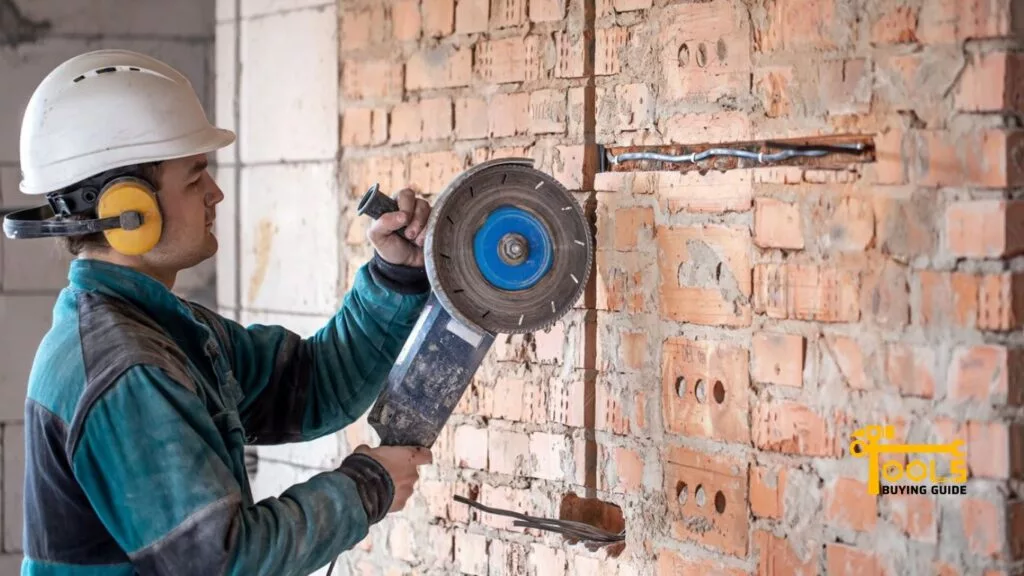
The bricks in your home improvement project don’t have to be precise rectangles. You can use an angle grinder to create intricate shapes and designs to elevate your project. To make sure your project turns out just right, you need to know how to cut bricks with an angle grinder.
This guide will explain the step-by-step process for cutting bricks with an angle grinder and key safety tips. We will also touch on alternatives to using an angle grinder for cutting bricks. Let’s get to it.
Step-by-Step Guide to Cutting Bricks with Angle Grinder
Here are the steps to follow when cutting bricks with an angle grinder:
Step 1: Gather the necessary supplies
To cut brick with an angle grinder, you’ll need to gather the following supplies:
- Angle Grinder
- Protective Gear (gloves, goggles, etc.)
- Brick Cutting Tool
- Safety Layered Clothes
- Brick Hammer and Chisel (Optional)
Step 2: Prepare the bricks and surface
Once you have gathered all your supplies, it’s time to prepare the bricks and surfaces. Start by inspecting each brick to check for any cracks or chips. Consider replacing them or using a different brick for the cut, if there are any. The cracks can weaken the bricks and lead to an uneven or dangerous cut.
You will also want to ensure that the surface you are cutting on is level and debris-free. This will help ensure that the angle grinder blade doesn’t catch on any uneven surfaces and cause an accident.
Use a piece of hardwood to protect the surface from any chips or debris resulting from the cutting process for optimal safety. In addition, consider using a clamp to secure the brick while cutting. This will help keep it steady and prevent any wobbles or unevenness.
Step 3: Mark the cut line on the brick
Once you have prepared the bricks and surface, it’s time to mark the cut line on your brick. This will help guide your angle grinder as you cut.
To do this, you can use a piece of chalk to draw the line on the brick. It’s best to use a straight edge and ensure the line is even. This will help you ensure an even cut and reduce the risk of accidents.
If you are cutting a complex shape, use a template to mark the brick. Place the template on the brick and trace around it with chalk. This will help you stay accurate and reduce any mistakes.
The measurements will depend on the project. If you are cutting a rectangular shape, measure the sides of the rectangle and mark them with chalk. For example, if the rectangle sides are 4 inches long and 3 inches wide, mark these measurements on the brick with chalk.
You may need a compass for more complex shapes, like circles or curves. This will help you get the exact measurements for the shape and draw it accurately on the brick.
Step 4: Set up the angle grinder
Once you have marked the cut line on your brick, it’s time to set up your angle grinder. Begin by inserting the brick-cutting blade into the angle grinder. Ensure it is inserted securely and won’t come loose during cutting.
Next, adjust settings such as the speed or power on your angle grinder for maximum efficiency. For brick cutting, you may need to use a lower speed setting, like 1,500 RPM, to avoid damaging or overheating the brick.
Once the settings are set, place your brick on a flat surface and secure it with the clamp. Finally, plug your angle grinder into a power source and double-check all connections before proceeding.
Step 5: Cut the brick with the angle grinder
Now that your angle grinder is set up, you can start cutting your brick. Begin by slowly guiding the blade along the chalk line you made earlier. Always keep a steady grip on the angle grinder and maintain a clear view of the blade.
If the blade begins to get stuck, stop and adjust your settings. This could indicate that you are cutting too quickly or that the blade is overheating. You may also need to use a different type of cutting blade, such as a diamond-blade saw, for your project.
A brick-cutting blade is the best choice, as it will give you a clean and accurate cut. As you continue to cut, maintain a steady speed and pressure on the angle grinder.
Step 6: Adjust and finish cutting as needed
Once you have finished the initial cut, you may need to adjust. This could mean smoothing out any edges or removing small brick pieces.
To adjust the cutting process, use a higher speed setting on your angle grinder and guide it along the edges of the cut. Ensure that you maintain a steady grip and keep a clear view of the blade.
If you are cutting a complex shape, use a brick hammer and chisel to remove small pieces of brick to achieve the desired shape. You may also need to use a masonry or diamond-blade saw if the angle grinder is not giving you the desired results.
Step 7: Clean up afterward
Once you have finished cutting the brick, it’s time to clean up. Begin by disconnecting the angle grinder from the power source and putting it away. Remove debris or dust from the area with a brush or vacuum cleaner.
Finally, dispose of the waste material properly. Separating metals from concrete and brick debris may require different disposal methods.
Key Safety Tips to Cut Bricks with Angle Grinder
You must take certain precautions to cut bricks with an angle grinder safely. Here are some key safety tips for how to cut brick:
- Wear protective gear and clothing such as safety glasses, gloves, long-sleeved shirts, and pants. This will help protect you from any chips or debris that may fly off while cutting.
- Secure the angle grinder firmly in your hands with both hands. This will help ensure a steady grip and reduce the risk of accidents.
- Maintain a clear view of the cutting blade at all times. This will help you avoid any unexpected mishaps.
- Disconnect the power when it is not in use. Even if your brick grinder is turned off, it’s still connected to the power source, which can be dangerous.
Alternatives to Angle Grinder for Cutting Bricks
If you don’t have an angle grinder, some alternatives can be used for cutting bricks. Here are a few of the most common options:
Masonry saw
A masonry saw is a great alternative to an angle grinder for cutting bricks. It features a circular blade that is attached to the end of a handle. This allows you to accurately and safely make cuts in brick or concrete surfaces.

Masonry saws are available in both electric and manual models. The electric version is more powerful and typically features adjustable blade speeds for different types of brick cutting.
This saw type can also cut other materials, such as stone, tile, or metal. However, using the correct grinder blades for masonry is important to get the best results.
Diamond-blade saw
A diamond-blade saw is another great option for cutting bricks. This type of saw features a circular blade that has diamond particles embedded in it. This makes the blade stronger and more durable, allowing you to make precise cuts in brick and other hard materials such as concrete or stone.
Diamond-blade saws are available in electric and manual models. The electric version is more powerful and usually has adjustable speed settings for different types of cutting.
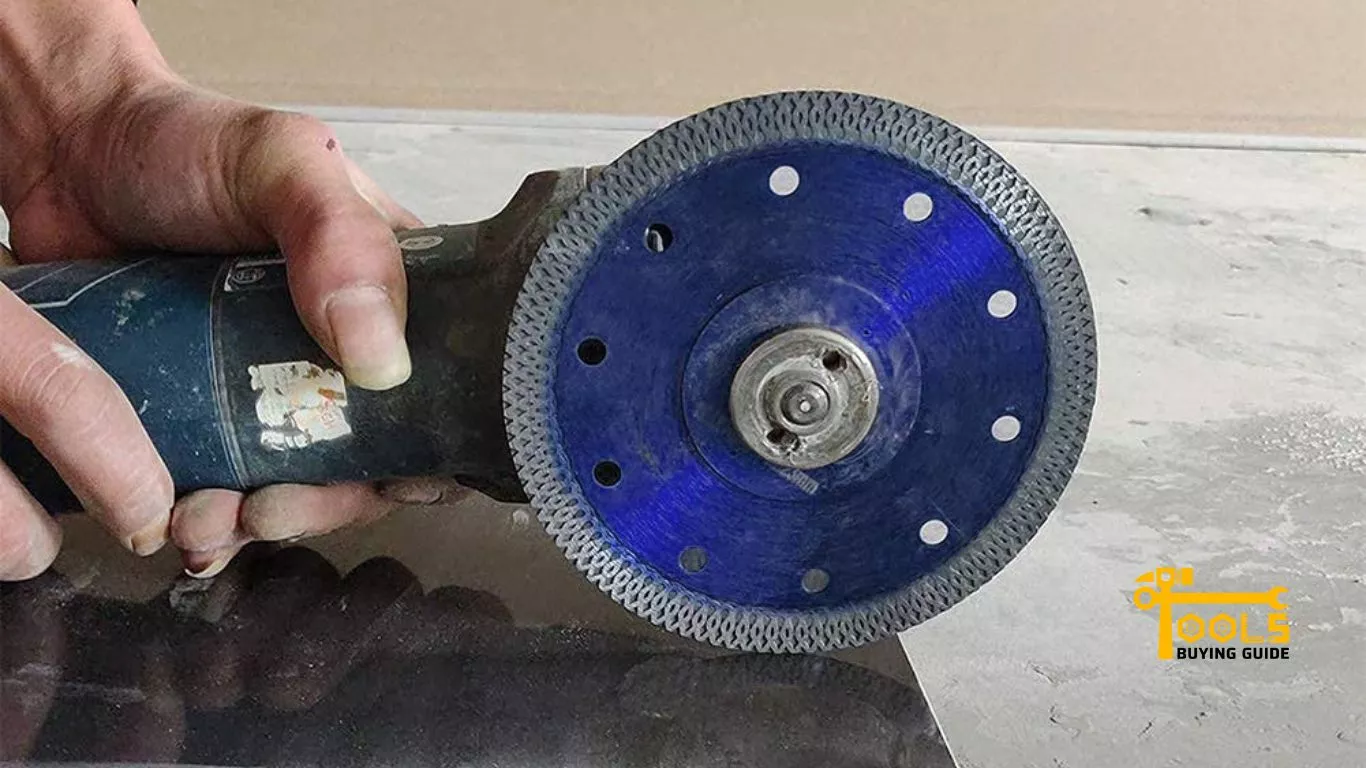
These saws are ideal for making accurate cuts quickly and efficiently. However, it’s important to use the right type of diamond blade for each material you’re cutting to achieve the best results.
Brick hammer and chisel
You can still brick cut with a brick hammer and chisel if you don’t have an angle grinder or masonry saw. This method is not as precise, but it’s effective for making cuts in small pieces of brick.
Start by marking the desired cut line on the brick with chalk. Then, position the chisel at a 45-degree angle and tap it gently with the hammer until the brick is cut into two pieces.
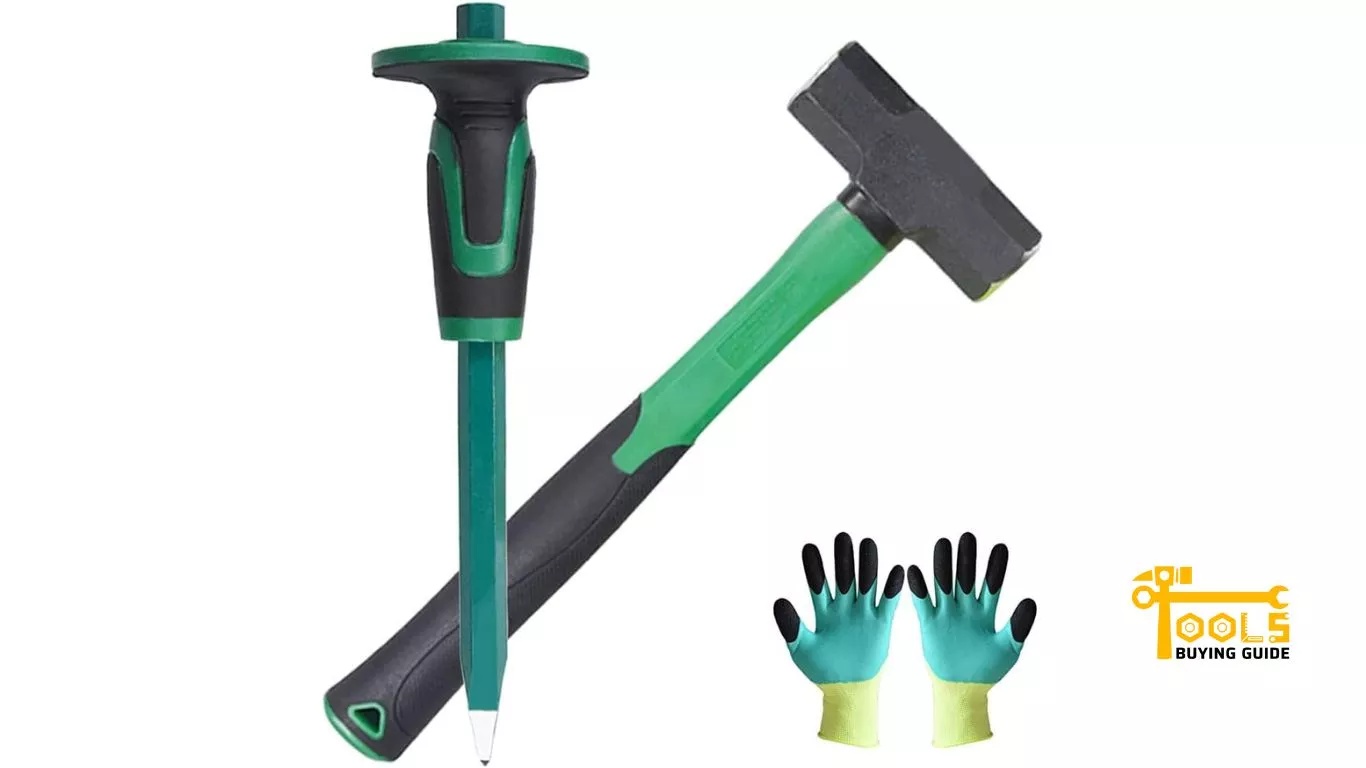
This method may take some time and practice to master, but it’s the best way to cut brick and make accurate cuts in small brick areas without power tools.
Frequently Asked Questions
The most appropriate angle grinder blade for brick cutting is a diamond-tipped blade. Diamond-tipped blades are designed to easily cut through hard materials like brick, concrete, and stone. You can find diamond-tipped blades in both segmented and continuous-rim configurations, depending on the type of cutting you need to do.
An angle grinder is the best tool to cut brick. Angle grinders are the most versatile power tools for cutting through hard materials like brick, concrete, and stone. When combined with a diamond-tipped blade, angle grinders can quickly work on almost any brick-cutting job.
Cutting bricks at an angle by hand can be done with a cold chisel and a brick hammer. Place the cold chisel on the edge of the brick at your desired angle, and lightly tap it with the hammer to create a groove. Widen this groove by angling the chisel deeper into the brick and tapping it with your hammer until you create a cut line that runs across the length of your brick.
Yes, angle grinders can cut many materials, including brick, concrete, stone, metal, tile, and asphalt. Depending on your blade type, an angle grinder can be used to make straight or curved cuts.
Tools commonly used for working with brick include cold chisels, hammer drills, masonry saws, angle grinders, trowels, and brick hammers. Depending on the type of cutting or shaping you need, these tools can help make quick work of any brickwork job.
Conclusion
Cutting bricks with an angle grinder is a great way to finish the job quickly and efficiently. You can easily cut through even the toughest brick materials with the right-angle grinder blade. This guide provides a detailed overview of the tools you’ll need and how to cut brick with angle grinder. With the right knowledge and tools, you can make quick work of any brick-cutting job.
So, next time you need to cut bricks for your latest project or repair job, look no further than your trusty angle grinder. With patience and practice, you’ll be cutting bricks like a pro in no time.


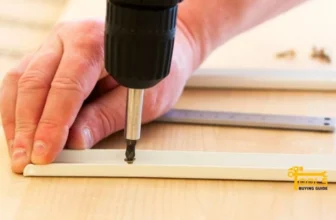
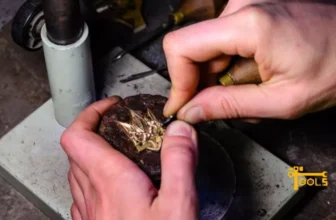


[…] your angle grinder starts to vibrate […]
[…] very well, considering their price tag. Furthermore, no matter how high-quality a blade is, if it has been designed to cut only one particular material, it will always be inferior to a blade designed more broadly. This is because its cutting […]